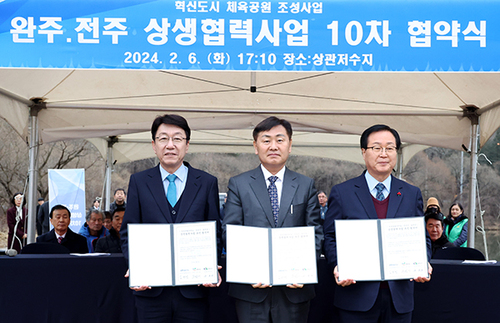전북대병원 소아청소년과 김현호(사진)교수가 2023년 대한의료정보학회 춘계학술대회에서 '머신 러닝 알고리즘을 이용한 조기 예측 모델'을 발표해 우수연제 논문상을 수상했다.
이번 연구는 극소 저체중 출생아의 출생 직전부터 생후 초기까지 상태와 질환 및 뇌실내출혈 발생에 따른 인과관계를 확인하고 머신 러닝에 기반한 심한 뇌실내출혈의 예측 모델을 만들기 위해 진행됐다.
미숙아의 뇌실내출혈은 뇌 손상과 수두증과 같은 심각한 신경학적인 합병증을 일으키고 심각한 뇌실내출혈은 뇌성 마비에서 사망까지 이르게 한다.
뇌실내출혈은 생후 초기에 발생 빈도가 높아 환자 상태의 파악과 적절한 케어 및 질환 예방이 필요하다.
김 교수는 몸무게 1,500g 미만의 극소 저체중 출생아를 대상으로 진행했으며 목표 변수는 3~4단계의 뇌실내출혈을 진단받았거나 생후 1주일 이내에 사망 여부로 정했다.
특성값은 데이터가 획득 가능한 시점에 따라 6대2대2 비율로 ▲ 훈련 ▲ 검증 ▲ 테스트 세트 등 3단계로 분할됐다.
또, 층화된 k-fold 교차 검증을 이용 모델 훈련에 사용됐고 이진 목표 변수의 분류에 사용되는 머신 러닝 알고리즘을 이용해 모델을 구축했다.
연구 결과 머신 러닝 알고리즘을 이용, 극소 저체중 출생아의 뇌실내출혈 및 1주 이내에 사망 예측 모델을 구축하는 데 성공했다.
전북대병원 김현호(소아청소년과) 교수는 "이번 연구를 바탕으로 미숙아의 뇌실내출혈을 예측할 수 있는 인공지능 모델로 구축하면 미숙아의 예후가 좋아질 뿐만 아니라 신생아 집중치료실에 근무하는 의료진의 두려움을 줄이고 의료 질 향상에 기여할 수 있을 것으로 생각한다"고 말했다.
그러면서 "출생 초기에 적용하는 신생아 소생술과 같은 처치 및 관리에 모델을 반영한다면 뇌실내출혈로 인한 영구적인 뇌 병변 발생을 예방할 수 있다"고 덧붙였다.
한편, 춘계학술대회는 계명대 동산병원 및 의과대학에서 개최됐으며 김 교수는 한국연구재단 바이오ㆍ의료 기술개발 사업 지원을 받아 연구를 수행했고 한국 신생아 네트워크 데이터 세트를 이용했다.
☞ 아래는 위 기사를 구글 번역이 번역한 영문 기사의 '전문' 입니다.
구글 번역은 이해도를 높이기 위해 노력하고 있으며 영문 번역에 오류가 있음을 전제로 합니다.
【Below is the 'full text' of the English article translated by Google Translate.
Google Translate is working hard to improve understanding, and assumes that there are errors in the English translation.】
Chonbuk National University Hospital Professor Kim Hyeon-ho 'Excellent Research Paper Award'
Using machine learning algorithms… Announcement of Early Prediction Models
Reporter Kim Hyun-jong
At Chonbuk National University Hospital, Professor Kim Hyeon-ho(pictured) of the Department of Pediatrics presented an 'early prediction model using machine learning algorithm' at the 2023 Spring Conference of the Korean Medical Information Society, winning the Excellent Research Paper Award.
This study was conducted to confirm the causal relationship between conditions, diseases, and intraventricular hemorrhage from just before birth to the early postnatal period of very low birth weight infants, and to create a predictive model for severe intraventricular hemorrhage based on machine learning.
Intraventricular hemorrhage in premature infants causes serious neurological complications such as brain damage and hydrocephalus, and severe intraventricular hemorrhage can lead to cerebral palsy and death.
Intraventricular hemorrhage has a high incidence in the early years of life, so it is necessary to identify the patient's condition and appropriate care and disease prevention.
Professor Kim conducted the study on extremely low birth weight infants weighing less than 1,500 g, and the target variable was whether they had been diagnosed with stage 3 or 4 intraventricular hemorrhage or died within one week of birth.
The feature values were divided into three stages ▲training ▲verification ▲test set at a ratio of 6:2:2 according to the point at which data could be obtained.
In addition, stratified k-fold cross-validation was used to train the model, and the model was built using a machine learning algorithm used for classification of the binary target variable.
As a result of the study, using a machine learning algorithm, they succeeded in building a model for predicting intraventricular hemorrhage and death within 1 week in very low birth weight infants.
Professor Kim Hyeon-ho of Chonbuk National University Hospital (Department of Pediatrics) said, "Based on this study, if we build an artificial intelligence model that can predict intraventricular hemorrhage in premature infants, the prognosis of premature infants will improve, as well as reduce the fear of medical staff working in the neonatal intensive care unit and reduce the quality of medical care. I think it can contribute to improvement," he said.
He added, "If the model is reflected in treatment and management, such as neonatal resuscitation applied at the beginning of birth, the occurrence of permanent brain lesions due to intraventricular hemorrhage can be prevented."
Meanwhile, the spring academic conference was held at Keimyung University Dongsan Hospital and College of Medicine, and Professor Kim conducted research with the support of the National Research Foundation's biomedical technology development project and used the Korean neonatal network data set.





















 많이 본 뉴스
많이 본 뉴스











